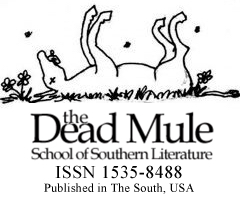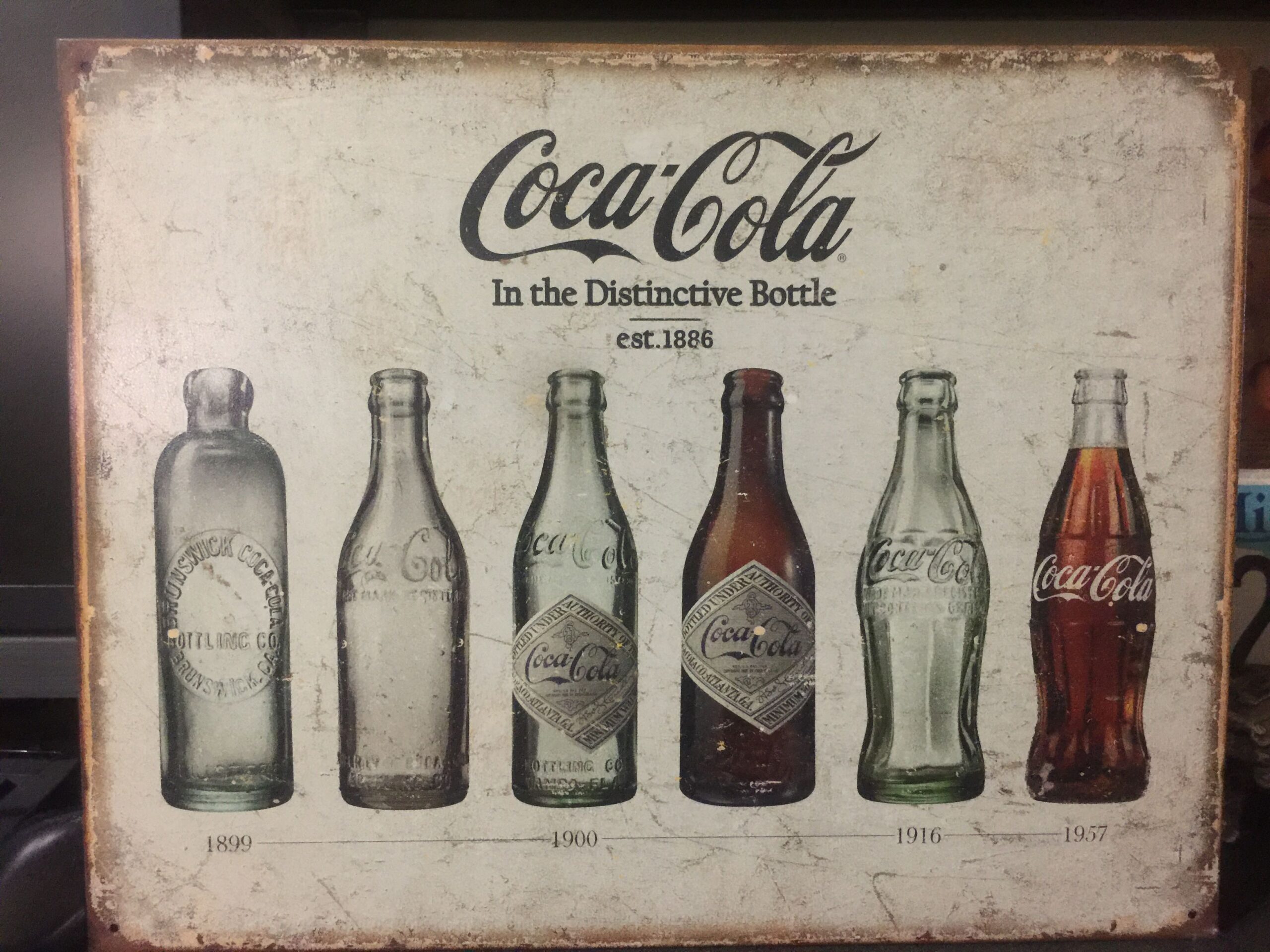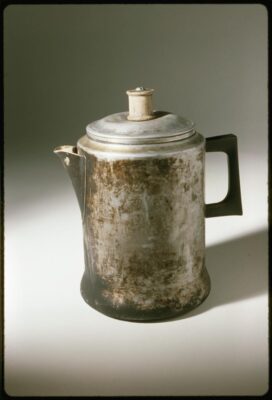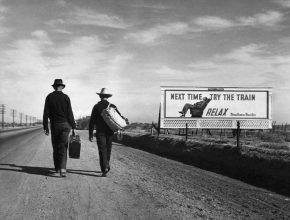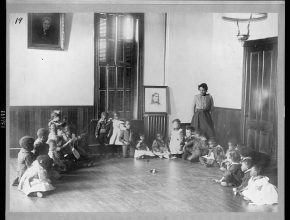Southern Legitimacy Statement: I’m a 7th generation Georgian born in Atlanta as the 3rd great grandson of a Confederate veteran. I was the first in my line to break a 153 year old tradition of staying in the peach state. I’ve been a Braves fan since before the miraculous 1991 season, and I can’t turn down biscuits and gravy even if I’m on a diet. Despite spending time living in D.C., Nebraska, the United Kingdom, and Colorado, I still occasionally pronounce “pair of pants” like “par of paints.” If Smokey and the Bandit is on television, I will cancel appointments and hold all calls. ¯\_(ツ)_/¯
A Sign of Good Taste
A day after President Lincoln died from his injuries by an assassin’s gun, John and the rest of the Confederates in his Georgia State Guard battalion, 3rd Cavalry, prepared for the defense of Columbus, Georgia. Though unaware of the news from nearly eight hundred miles to the north of Lincoln’s death, John and most southerners saw the writing on the wall in the spring of 1865. For them, the war for southern independence was coming to an end. Robert E. Lee had surrendered at Appomattox just the week before, sending the Army of Northern Virginia, the largest fighting force on the side of rebellion, home in defeat. John, a 33-year-old Lieutenant Colonel at the time, would have been aware of the losing battle upon which he was about to embark against an overwhelming Union army. In fact, the Battle of Columbus would be called the “closing conflict of the war.”
Born in Knoxville, Georgia in 1831, John was no simple farm boy. With a strong talent for chemistry, he attended a medical college in Georgia, earning his degree at only nineteen years of age. He practiced regular old-fashioned medicine, some surgery, and even did a stint as a pharmacist before war broke out.
With news of Union General James Wilson’s troops marching east from Montgomery, Alabama towards the manufacturing district of Columbus, John, under the command of Confederate General Howell Cobb, got to work fortifying the city’s defenses. Two major bridges crossed the Chattahoochee River to the city’s west, which served as the main traffic routes. The Confederate army focused most of their efforts there. On Easter Sunday, April 16th, 1865, as thirteen thousand Union cavalrymen armed with repeaters moved in on Girard, Georgia, a small town just to the south of Columbus, the Yankees had initially thought they’d already won the day without firing a shot. The Dillingham Street Bridge sat quiet and empty of any Rebel forces, so the Union troops began to walk across to claim the town. Fortunately for the Federal troops, their men noticed a trap early enough to retreat, just as the bridge went up in flames.
Now focusing on the remaining structure, the heavily defended 14th Street Bridge, the Union army began their attack at around 9 o’clock in the evening. John and his men were involved in heavy fighting there. Most of the remaining Confederates in this fight were reservists and not battle-hardened veterans like the Union soldiers fighting for the bridge. It was in this intense battle, which ended in another Union victory and essentially finished the Civil War, that John received a serious saber wound to his chest. Although he survived, he would require the use of morphine to ease his pain.
Becoming addicted to the stuff, as many soldiers did, John decided to use his biochemistry background to seek a cure for his own ailment. He wanted something other than a powerful narcotic, so he began to experiment with morphine-free alternatives. Painkillers were hit or miss in the late 1800s, so John decided to use a toxic plant to create what he sold as “Dr. Tuggle’s Compound Syrup of Globe Flower.” The compound was used along with alcohol to create a “French Wine” that could help cure malaise and lift the spirits of the downtrodden. Few people were more downtrodden than recently defeated southerners who were looking to rebuild and find their way in their own newly “conquered” lands. John took his wine from Columbus up to Atlanta, which was in the very early stages of reconstruction and rebuilding after having been burned to the ground in Sherman’s infamous march to the sea in 1864. Unfortunately for his new “French Wine,” however, the city of Atlanta passed temperance legislation in 1886 that restricted the sale of alcohol. Needing to come up with a non-alcoholic alternative, John enlisted the help of a good friend of his, a drugstore owner named Willis Venable. The two men experimented and perfected what they thought was a good compound syrup that could be sold as a “medicine” in accordance with the temperance laws.
One day while putting the compound together, John made a single error in following the instructions he and Willis had laid out for themselves. As he poured the ingredients into a flask, he accidentally put in carbonated water instead of the plain old H2O he was supposed to add, and the results blew his mind. Deciding to sell it as a fountain drink almost immediately, Dr. John Stith Pemberton’s new beverage would go on to become one of the world’s most recognizable brands. With a current market capitalization of about $225 billion and annual revenues easily in excess of $30 billion, Coca-Cola is the happy accident from one of our nation’s most challenging times.
Dr. Pemberton sold the rights away to the famous beverage he invented to a shrewd businessman in Atlanta who knew the value of what he was buying. Sadly, John died of cancer at only fifty-seven years old and in poverty.
About one hundred and twenty years after the Battle of Columbus where John received his terrible wounds, and ninety-nine years after the original version of Coca-Cola hit store shelves and drugstore counters, executives would roll up their sleeves and get to work trying to catch lightning in a bottle for the second time. In 1985, rival Pepsi had been riding high after having signed a huge endorsement deal with Michael Jackson the year prior. Making matters worse, numerous taste tests, including those conducted by Coca-Cola internally, showed that more Americans preferred to be a part of the Pepsi Generation than the old familiar standby of Coca-Cola. In full panic mode, executives decided that they should make a sweeter beverage. They needed to create a new and exciting drink like Dr. Pemberton had done nearly a century before.
They failed.
It’s important to note that the New York Times Business Section reported on April 18th, 1985 that Coca-Cola earnings had risen over 2.3% which would bring a healthy annual revenue of $7.36 billion by the end of 1985. It was then, as it now remains, one of the most successful brands on the planet. Five days later, on April 23rd, 1985 New Coke was released after months of research and design. It was widely panned. If you want to know what it tasted like, and you missed the 2019 re-release of New Coke (or you don’t have a time machine), just get a regular can of Coke, open it, let it sit for about three weeks in the open air and under the sun before taking a swig. The multi-billion-dollar company could not duplicate what Dr. Pemberton had fallen upon by chance. Perhaps it was luck, or maybe it’s simply a matter of good taste. Regardless, the next time you pop the top on one of the Coca-Cola Company’s numerous beverages, give a slight nod to the pain and suffering its creator endured. Take comfort in the fact that true inspiration can come any time, even in the direst of circumstances, but also take great care to know your true worth.
THE END.
